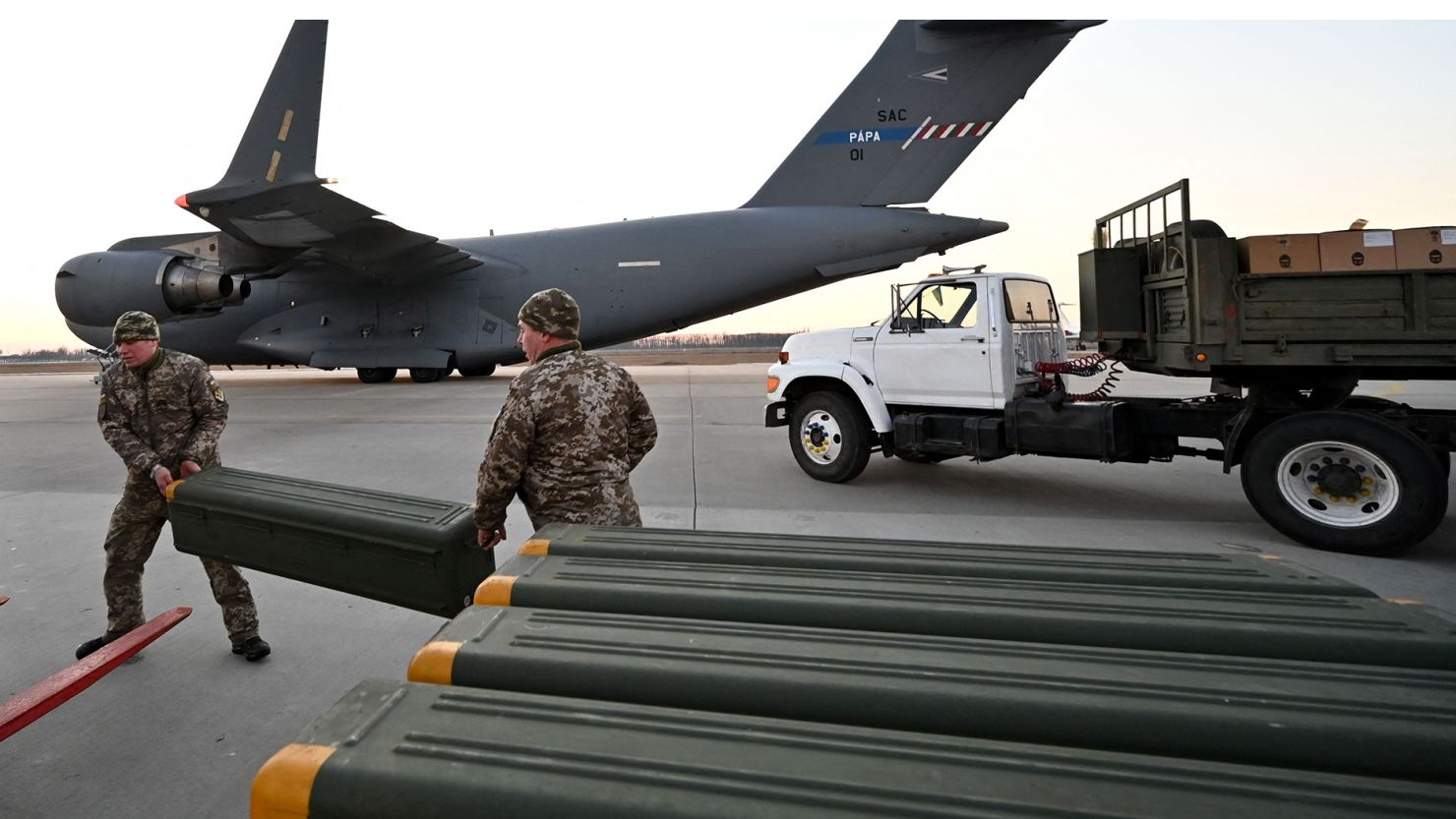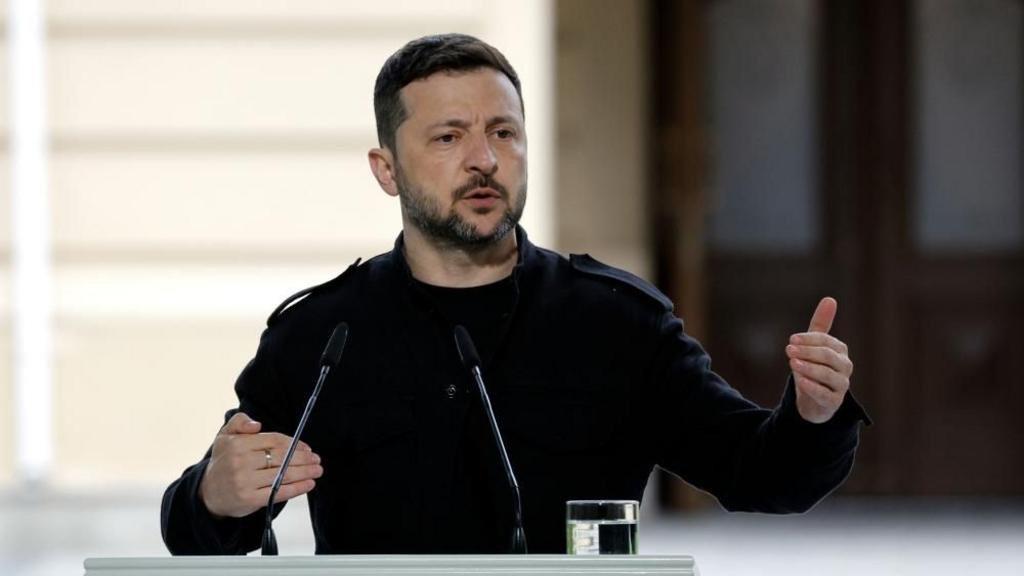News
US Halts Critical Ukraine Arms, What Is Next?

In a significant development affecting the ongoing conflict in Ukraine, the Pentagon on Tuesday, July 1, 2025. paused certain shipments of air defense missiles and precision munitions destined for Kyiv.
This decision, confirmed by two sources familiar with the matter, stems from concerns about dwindling U.S. military stockpiles.
The slowdown in arms deliveries comes despite previous commitments made under the administration of former President Joe Biden.
Background: U.S. Military Aid to Ukraine
Since Russia’s full-scale invasion of Ukraine in early 2022, the United States has reportedly been a key supplier of military aid to Kyiv.
It has reportedly been providing a range of weapons systems, including advanced air defense missiles, artillery, and precision-guided munitions.
These supplies have been critical in helping Ukraine defend its sovereignty against Russian advances, especially as Moscow continues to exert control over roughly 20% of Ukrainian territory.
Under President Biden, the U.S. ramped up military assistance, pledging billions of dollars in aid to bolster Ukraine’s defenses.
This included sophisticated air defense interceptors designed to counter Russian drones and missile attacks, which have escalated in frequency and intensity in recent months.
The Recent Pause in Shipments
According to insiders, the Pentagon’s decision to slow some shipments began in the days leading up to the announcement.
The affected munitions primarily include air defense interceptors, vital for neutralizing incoming Russian drones and missile strikes, as well as other precision-guided weapons.
This move marks a cautious recalibration of U.S. military support, driven by concerns that American stockpiles of these critical weapons are running dangerously low.
The Pentagon has not issued an official statement or confirmed the details publicly.
On the other hand, pause signals the complexity of balancing ongoing foreign military commitments with the need to maintain adequate defense reserves at home.
Context: Ongoing Conflict and Russian Advances
The timing of this pause is notable given the current military situation on the ground in Ukraine.
Russian forces have been steadily advancing in the southeastern regions of Donetsk and Dnipropetrovsk, making incremental territorial gains despite fierce Ukrainian resistance.
Additionally, Russia has intensified air attacks across Ukraine, increasing the demand for effective air defense systems.
The gradual loss of territory and the surge in aerial assaults underscore the urgent need for robust military support to Kyiv.
Air defense interceptors, in particular, play a crucial role in protecting civilian populations and military infrastructure from missile and drone strikes.
These have reportedly become a hallmark of Russia’s tactical approach.
Historical Precedents and Policy Uncertainty
This recent pause is not the first time U.S. weapons aid to Ukraine has been interrupted.
In February, shipments were briefly halted, followed by a longer pause in March.
These interruptions occurred during transitions in U.S. policy and administration, reflecting the challenges of sustaining long-term military support in a protracted conflict.
The Trump administration had resumed sending the remaining aid packages approved during Biden’s tenure.
However, no new policy announcements have been made to clarify the current stance or future plans regarding arms shipments.
Implications for Ukraine and Global Security
The temporary halt in shipments raises important questions about the sustainability of Western military support for Ukraine amid an evolving geopolitical landscape.
For Kyiv, any reduction in the flow of advanced weaponry could hamper its ability to defend against ongoing Russian aggression, potentially affecting the balance of power on the battlefield.
For the United States and its allies, the decision highlights the logistical and strategic challenges of managing finite military resources while responding to multiple global security demands.
It also underscores the delicate balance between supporting partner nations and ensuring readiness for potential future conflicts involving U.S. forces.
Looking Ahead: What This Means for the Conflict
While the Pentagon’s pause is described as a slowdown rather than a complete cessation, it nevertheless signals a period of reassessment.
The U.S. government faces pressure to replenish its own stockpiles while continuing to support Ukraine’s defense needs.
Observers and analysts will be closely watching for any shifts in U.S. policy or announcements regarding renewed shipments.
The evolving situation on the ground in Ukraine, combined with broader international diplomatic efforts, will influence how and when military aid resumes at full capacity.
Conclusion
The Pentagon’s recent decision to halt some shipments of air defense missiles and precision munitions to Ukraine reflects a complex interplay of military logistics, strategic priorities, and geopolitical realities.
As Russia continues its offensive and intensifies air attacks, the need for effective air defense remains critical for Ukraine’s survival.
This development serves as a reminder of the challenges faced by countries providing military aid in a prolonged conflict.
It also highlights the importance of maintaining a balance between supporting allies and preserving national defense capabilities.
For the global community, the situation underscores the ongoing volatility in Eastern Europe and the broader implications for international security and stability.
For Diaspora Digital Media Updates click on Whatsapp, or Telegram. For eyewitness accounts/ reports/ articles, write to: citizenreports@diasporadigitalmedia.com. Follow us on X (Fomerly Twitter) or Facebook












